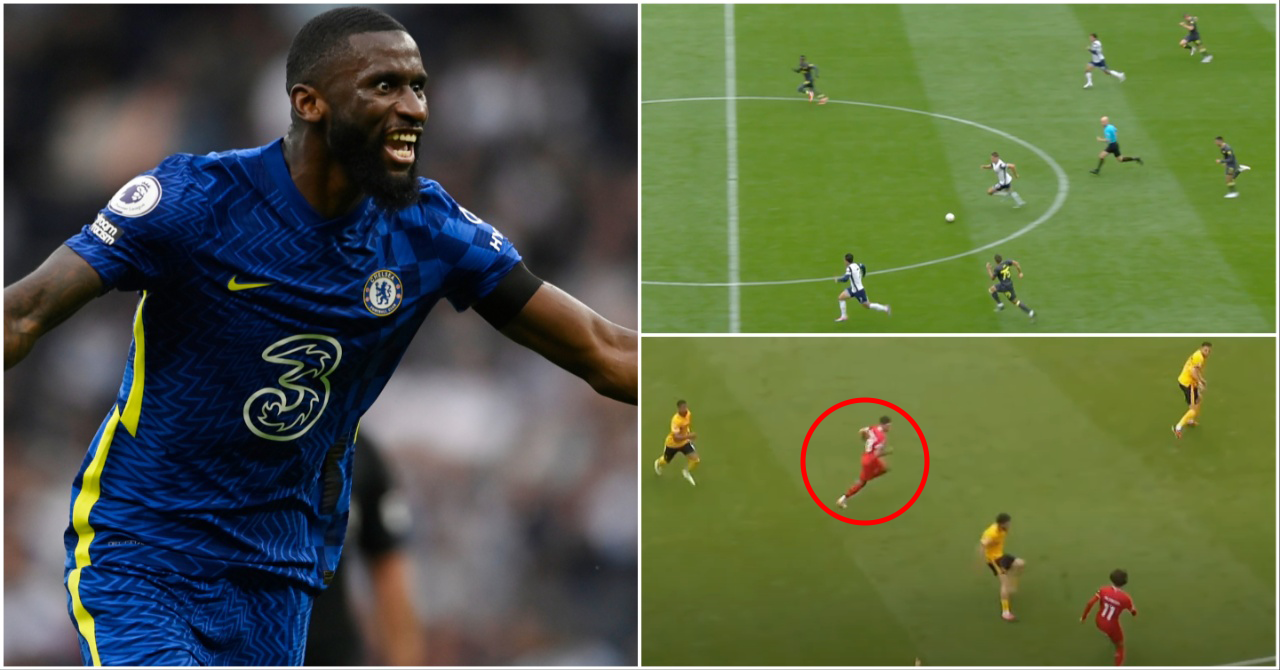
The Hidden Billions: A Comprehensive Guide to Funding Football Transfers
Beyond the roar of the crowd and the thrill of a last-minute winner, the world of professional football harbors a complex and often opaque financial ecosystem. At its heart lies the transfer market – a multi-billion-dollar annual spectacle where players move between clubs, driving narratives, shaping dynasties, and generating immense financial flows. While fans eagerly anticipate the unveiling of a new signing, few truly understand the intricate mechanisms and diverse sources of funding that make these colossal transactions possible.
This guide delves deep into the financial arteries of football, dissecting where the money for these transfers truly originates, the intricate web of stakeholders involved, and the regulatory frameworks that attempt to govern this high-stakes game.
I. The Primary Pillars of Transfer Funding
At its core, funding a football transfer is about a club’s ability to generate or access capital. This capital comes from a variety of interconnected sources, each playing a crucial role in the overall financial health and transfer capacity of a club.
A. Club Revenue Generation: The Lifeblood
The vast majority of transfer funds are generated through a club’s regular operational income. This is the most sustainable and preferred method of funding, as it doesn’t incur debt or dilute ownership.
-
Broadcasting Rights: This is, without doubt, the single largest revenue stream for most top-tier football clubs, particularly in Europe’s major leagues (Premier League, La Liga, Serie A, Bundesliga, Ligue 1). Billions of dollars are paid by television networks and streaming platforms for the right to broadcast matches. This money is then distributed to clubs based on factors like league position, number of televised games, and historical success. For instance, the Premier League’s domestic and international broadcasting deals are worth astronomical sums, providing a robust financial foundation for its clubs to invest in transfers. A club’s share of this revenue directly impacts its spending power in the transfer market.
-
Commercial Income: This category encompasses a wide array of revenue streams derived from a club’s brand and marketing efforts.
- Sponsorship Deals: These are lucrative agreements with companies (e.g., shirt sponsors, kit manufacturers, training ground sponsors, official partners for various products). These deals can be multi-year and multi-million-dollar contracts, providing a steady and significant income stream.
- Merchandise Sales: Revenue from the sale of replica kits, scarves, memorabilia, and other club-branded products contributes significantly, especially for globally popular clubs with a vast fan base.
- Pre-season Tours & Friendlies: Major clubs often embark on international tours, particularly to lucrative markets in Asia and North America, generating substantial appearance fees and commercial opportunities.
- Digital & Media Rights: Income from club-specific apps, social media monetization, and direct-to-consumer content.
-
Matchday Revenue: While often smaller than broadcasting or commercial income for elite clubs, matchday revenue remains a vital component, especially for clubs outside the absolute elite. This includes:
- Ticket Sales: Revenue from season tickets, individual match tickets, and cup competitions.
- Hospitality & Catering: Income from executive boxes, VIP lounges, and food/beverage sales within the stadium.
- Stadium Tours & Museum Entrance Fees: For clubs with iconic stadiums, these can be significant tourist attractions.
-
Prize Money: Success in domestic and international competitions brings substantial financial rewards.
- UEFA Champions League/Europa League/Conference League: Participation and progression in these prestigious European competitions offer immense prize money, with the Champions League being particularly lucrative. Reaching the knockout stages or winning the tournament can inject tens, if not hundreds, of millions of euros into a club’s coffers.
- Domestic Leagues & Cups: While less than European competitions, winning or performing well in national leagues and cup competitions also yields prize money, further bolstering a club’s transfer budget.
B. Player Sales: Recycling Capital
A crucial, though often painful, necessity for many clubs is the sale of existing players. This is not merely about offloading unwanted talent; it’s a strategic financial mechanism.
- Capital Gains: Selling a player for more than their book value (original transfer fee minus amortization) generates a profit that can be immediately reinvested.
- Wage Bill Reduction: Offloading high-earning players frees up significant funds in the club’s wage budget, allowing for new signings without increasing overall expenditure.
- Balancing the Books: For clubs operating under Financial Fair Play (FFP) regulations, player sales are often vital to meet profitability targets and fund new acquisitions. The "sell to buy" model is a common reality for many, even top clubs, especially when targeting high-value players.
C. Owner Investment: The "Sugar Daddies" and Strategic Backers
For many clubs, especially those undergoing a rapid ascent or seeking to challenge the established elite, owner investment plays a pivotal role. This can take several forms:
- Equity Injections: Owners directly inject capital into the club by purchasing new shares. This increases the club’s equity, providing a cash boost without creating debt. This is often seen in new takeovers where the owner aims to quickly strengthen the squad.
- Loans: Owners might provide interest-free or low-interest loans to the club. While this provides immediate cash, it does create a liability on the club’s balance sheet that theoretically needs to be repaid. However, in many cases, these loans are eventually converted into equity or written off, especially if the owner is committed for the long term.
- Strategic Investment: Some owners view their football club as part of a larger business portfolio or as a brand-building exercise (e.g., state-backed ownership). Their investment might be less about immediate financial returns from the club itself and more about broader geopolitical or commercial objectives, allowing for massive, sustained funding for transfers.
D. External Financing: Bank Loans and Credit Lines
Even financially healthy clubs sometimes resort to external financing to manage cash flow or seize immediate transfer opportunities.
- Bank Loans: Clubs may take out traditional loans from banks, using future revenues (like broadcasting rights or season ticket sales) as collateral. These are typically used for large, one-off expenditures or to bridge gaps between revenue receipts and major outgoings.
- Revolving Credit Facilities: These are flexible lines of credit that clubs can draw upon as needed, similar to a business overdraft. They provide liquidity for short-term needs, such as making an immediate transfer payment before a large revenue payment (e.g., from a broadcasting deal) comes in.
- Bonds: Larger, more stable clubs might issue bonds to investors, essentially borrowing money from the market. This is a less common but increasingly used method for significant capital projects, including stadium development, which can indirectly free up other funds for transfers.
II. The Intricacies of the Transfer Market: Beyond the Headline Fee
The announced transfer fee is just one piece of the financial puzzle. Several other factors influence the total cost and the flow of money in a transfer.
A. Installment Payments
Rarely is a large transfer fee paid in a single lump sum. Instead, fees are typically structured into a series of installment payments spread over several years, often aligning with the player’s contract length. This benefits the buying club by:
- Managing Cash Flow: It avoids a massive one-time hit to their finances.
- Spreading the Cost: It allows the club to amortize the transfer fee over the player’s contract, aligning the expense with the period of benefit.
For the selling club, while they don’t get all the money upfront, it can provide a steady income stream. However, it also exposes them to potential risks if the buying club defaults or encounters financial difficulties.
B. Agent Commissions
Player agents, who represent the players and sometimes facilitate the transfer, command significant fees. These commissions are a substantial cost, often added on top of the transfer fee itself.
- Who Pays? Traditionally, the buying club pays the agent, sometimes on behalf of the player. However, it’s becoming increasingly common for both the buying club and the player to contribute, or for the agent to receive a percentage of the player’s wages as part of the deal.
- Scale: Agent fees can range from 5% to 10% (or even higher for complex deals) of the player’s total contract value or the transfer fee, adding millions to the overall cost of a transfer.
C. Performance-Related Add-ons and Clauses
Transfer fees often include a base amount plus various add-ons and clauses that are activated based on future performance. These can include:
- Player Performance: Goals scored, appearances made, individual awards.
- Team Performance: Winning trophies, qualifying for specific competitions (e.g., Champions League), avoiding relegation.
- Sell-on Clauses: A percentage of any future transfer fee if the player is sold again. This benefits the original selling club.
- Buy-back Clauses: An option for the original selling club to re-sign the player for a pre-agreed fee.
D. Solidarity Payments and Training Compensation
FIFA regulations ensure that clubs involved in a player’s development throughout their career receive a share of future transfer fees.
- Solidarity Mechanism: If a professional player is transferred during the course of their contract, 5% of the transfer fee is deducted and distributed among the clubs that contributed to their education and training between the ages of 12 and 23. This is a vital funding source for smaller, youth-focused clubs.
- Training Compensation: Paid when a player signs their first professional contract or when they transfer internationally before the age of 23. It compensates clubs for the cost of training and educating young players.
E. Third-Party Ownership (TPO) – Historical Context
While largely banned by FIFA since 2015 due to concerns about integrity and the influence of external parties, Third-Party Ownership was historically a significant funding mechanism. In TPO, an investment fund or individual would own a percentage of a player’s economic rights, essentially providing capital to a club in exchange for a share of any future transfer fee. While controversial, it provided a way for financially struggling clubs to acquire talent and for investors to profit from player development. Its prohibition has made clubs more reliant on traditional funding methods.
III. The Regulatory Landscape: Financial Fair Play (FFP)
The financial landscape of football transfers is heavily influenced by regulatory bodies, most notably UEFA’s Financial Fair Play (FFP) regulations, now evolving into the Club Licensing and Financial Sustainability Regulations. Introduced in 2010, FFP’s primary goal was to prevent clubs from spending more than they earn, thereby reducing unsustainable debt and promoting long-term financial stability.
- Breakeven Rule: The core of FFP requires clubs to "break even" over a three-year monitoring period, meaning their relevant expenditure (including wages, transfer amortization, and operating costs) should not significantly exceed their relevant income.
- Impact on Transfers: FFP directly influences a club’s transfer strategy. A club cannot simply rely on limitless owner investment if that investment doesn’t translate into sustainable revenue. Clubs are forced to be more fiscally responsible, balancing spending with income. Player sales, for instance, become even more critical under FFP as they count as income.
- New Regulations (2022 onwards): UEFA has introduced new rules focusing on solvency, stability, and cost control, particularly the "squad cost ratio" (wages, transfer amortization, and agent fees capped at a percentage of revenue, eventually reaching 70%). This further tightens the leash on transfer spending, pushing clubs towards more organic growth and less reliance on external capital injections for day-to-day operations.
IV. The Ecosystem Beyond Money
While money is the primary driver, the funding of football transfers is also deeply intertwined with human capital and sophisticated operational processes:
- Scouting and Analytics: Identifying the right talent is the first step. Clubs invest heavily in global scouting networks, data analytics, and performance analysis to identify players who represent good value and fit the team’s needs.
- Legal and Administrative Teams: Transfer deals involve complex contracts, international regulations, and often intricate tax implications. Dedicated legal and administrative teams are essential to navigate these complexities.
- Player Power and Agent Influence: A player’s desire to move and their agent’s negotiating prowess can significantly influence transfer fees and salary demands, adding another layer of complexity to the financial equation.
V. Future Trends and Challenges
The funding landscape for football transfers is constantly evolving. We can expect:
- Continued Inflation: Transfer fees, particularly for elite young talent, are likely to continue rising, driven by increasing broadcasting revenues and global demand.
- Data-Driven Decisions: Analytics will play an even larger role in identifying undervalued talent and optimizing transfer spending.
- Sustainability Focus: FFP and similar regulations will continue to push clubs towards more sustainable financial models, potentially curbing excessive spending from new owners.
- Diversification of Revenue: Clubs will explore new digital revenue streams, fan engagement models, and global brand partnerships to increase their financial capacity.
Conclusion
The funding of football transfers is far more than a simple transaction between two clubs. It is a sophisticated dance of billions, orchestrated by a diverse cast of stakeholders, and underpinned by a complex web of financial mechanisms and regulatory oversight. From the global broadcasting deals that fuel club coffers to the strategic decisions of owners, the necessity of player sales, and the ever-present shadow of Financial Fair Play, every aspect plays a critical role. Understanding these intricate financial flows not only demystifies the headline-grabbing transfer fees but also provides a deeper appreciation for the economic engine that drives the beautiful game.



